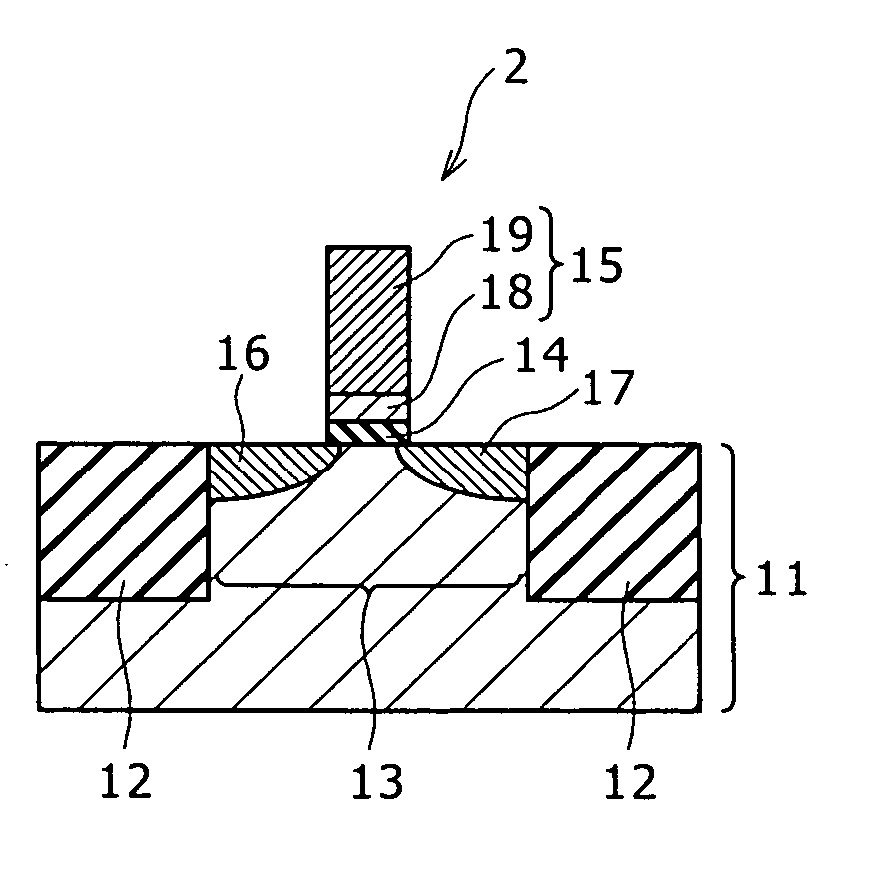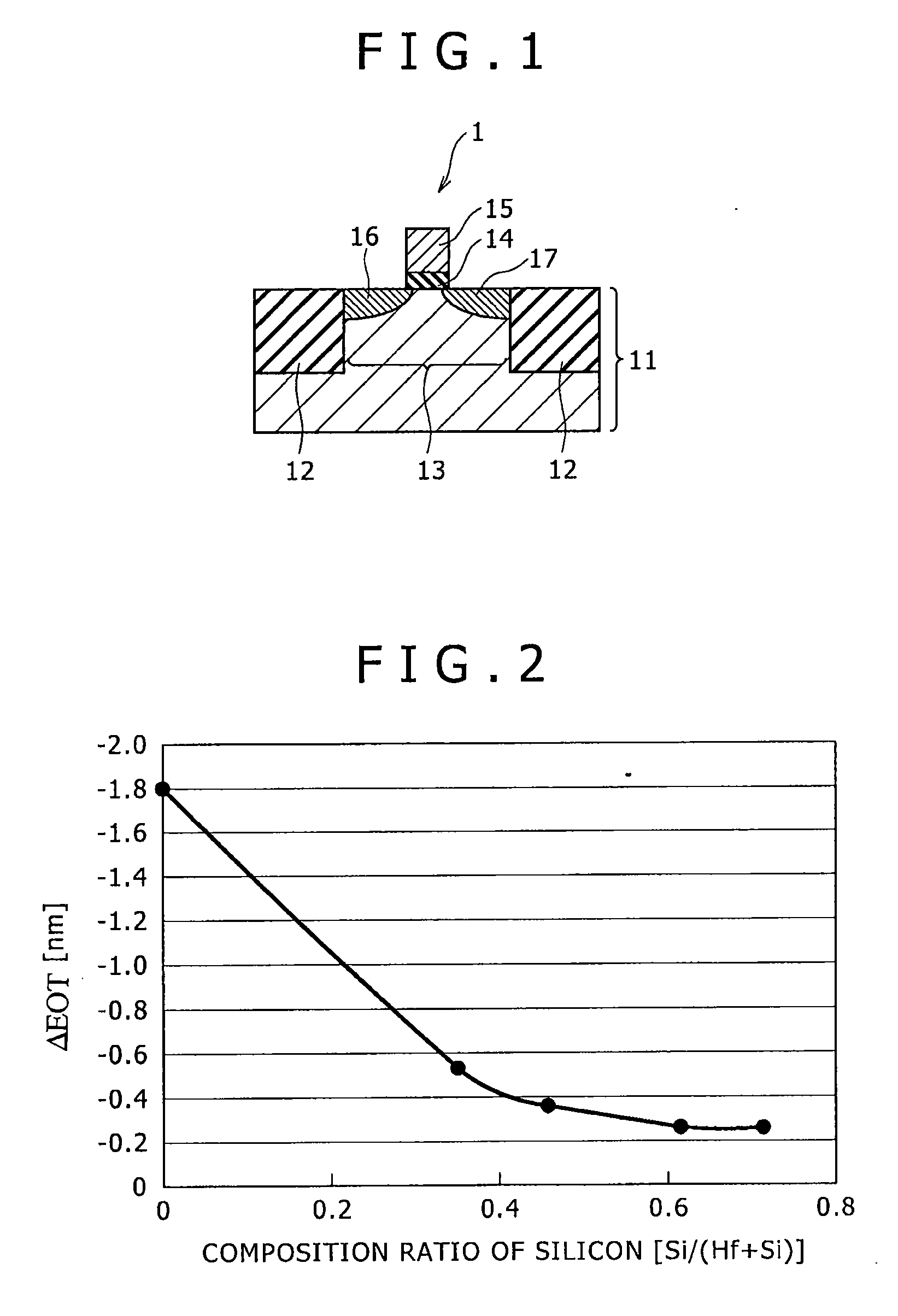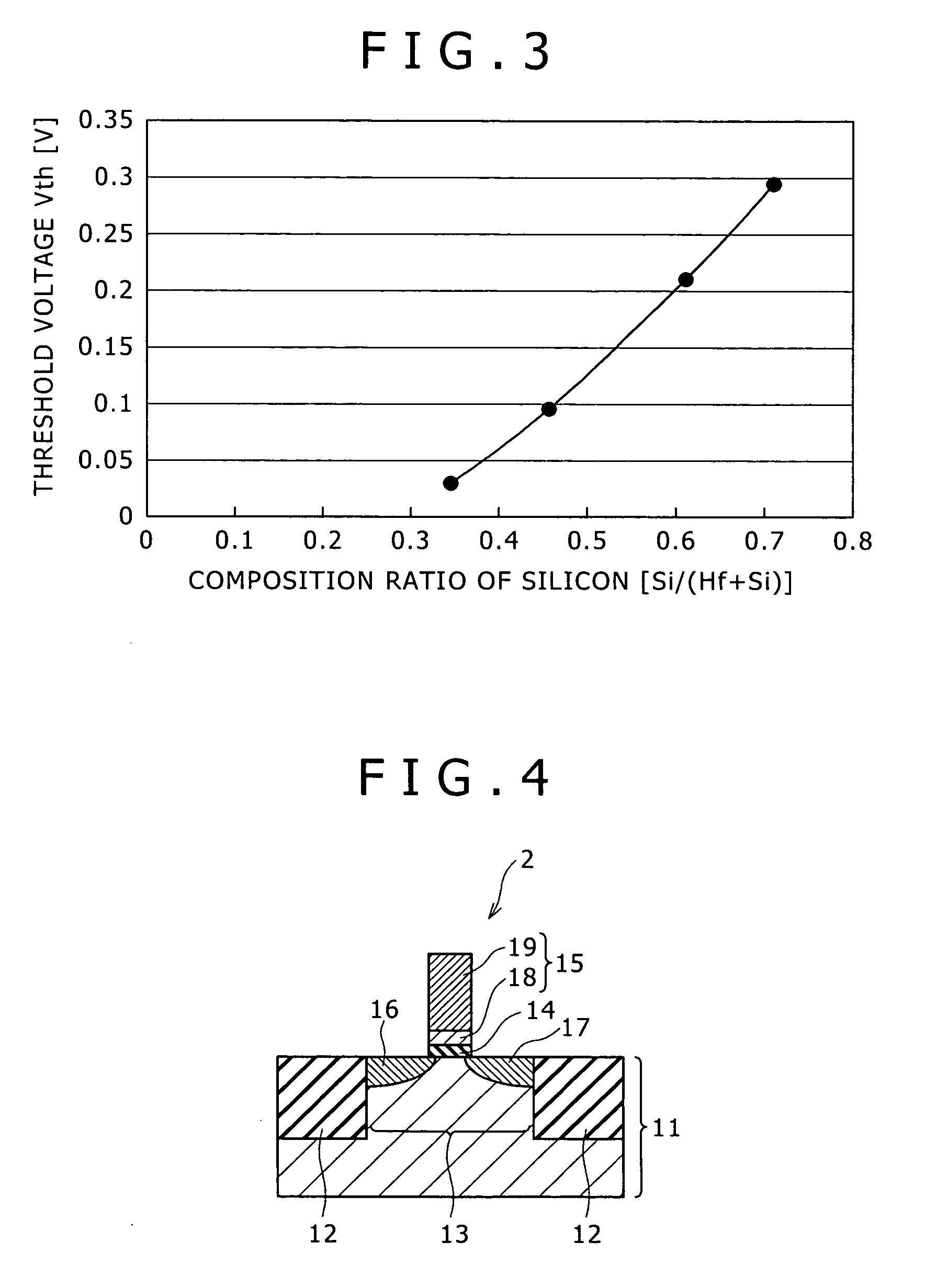Semiconductor device and method of manufacturing the same
a technology of semiconductor devices and semiconductors, applied in the direction of semiconductor devices, basic electric elements, electrical equipment, etc., can solve the problems of increased leakage current and reduced thickness of gate insulation films, and achieve the effects of reducing the reactivity of the gate electrode with the underlying gate insulation films, reducing leakage current, and reducing leakage curren
- Summary
- Abstract
- Description
- Claims
- Application Information
AI Technical Summary
Benefits of technology
Problems solved by technology
Method used
Image
Examples
Embodiment Construction
[0025] The semiconductor device according to the present invention is, for example, an NMOSFET having a gate electrode on a gate insulation film, wherein at least the gate insulation film side of the gate electrode is composed of a film containing silicon (Si) and hafnium (Hf), and the composition ratio Si / (Hf+Si) of silicon based on the total of hafnium and silicon is in the range of from 20 to 70%.
[0026] Now, a first example of an embodiment of the semiconductor device according to the present invention will be described below referring to the schematic configuration sectional diagram shown in FIG. 1. In FIG. 1, an NMOSFET will be described, as an example.
[0027] As shown in FIG. 1, device isolation regions 12 are formed in a semiconductor substrate 11, whereby a device forming region 13 is partitioned. A silicon substrate, as an example, is used as the semiconductor substrate 11, and the device isolation regions 12 are of an STI (Shallow Trench Isolation) structure, for example....
PUM
 Login to View More
Login to View More Abstract
Description
Claims
Application Information
 Login to View More
Login to View More - R&D
- Intellectual Property
- Life Sciences
- Materials
- Tech Scout
- Unparalleled Data Quality
- Higher Quality Content
- 60% Fewer Hallucinations
Browse by: Latest US Patents, China's latest patents, Technical Efficacy Thesaurus, Application Domain, Technology Topic, Popular Technical Reports.
© 2025 PatSnap. All rights reserved.Legal|Privacy policy|Modern Slavery Act Transparency Statement|Sitemap|About US| Contact US: help@patsnap.com



